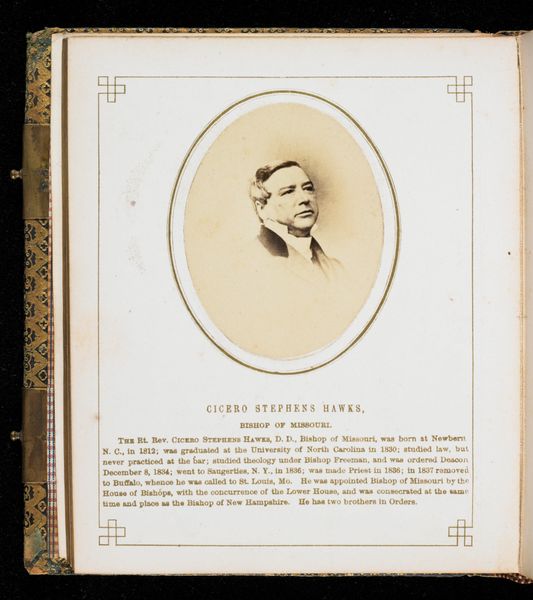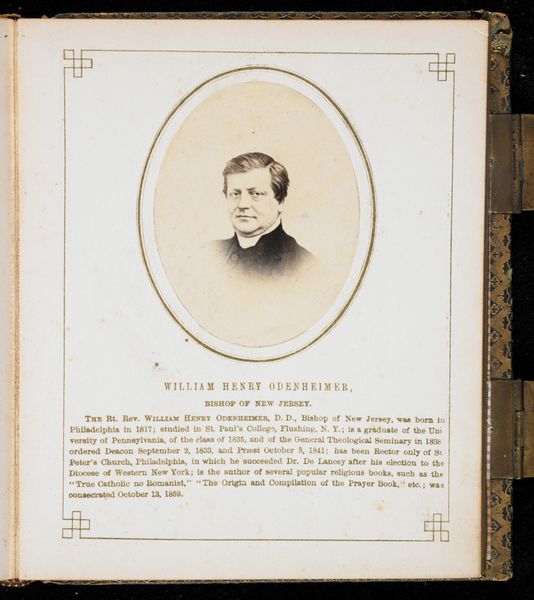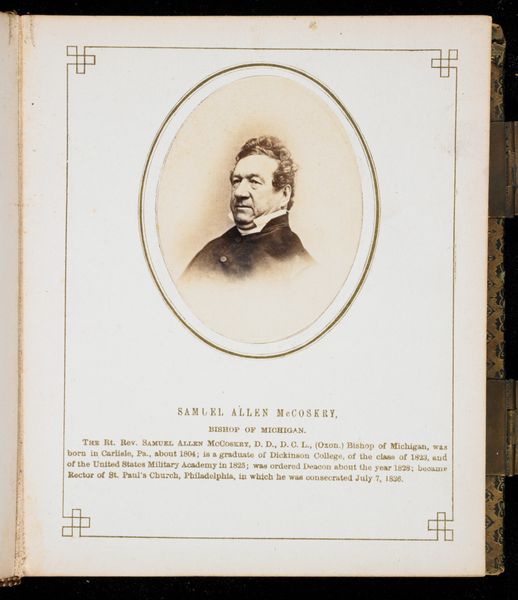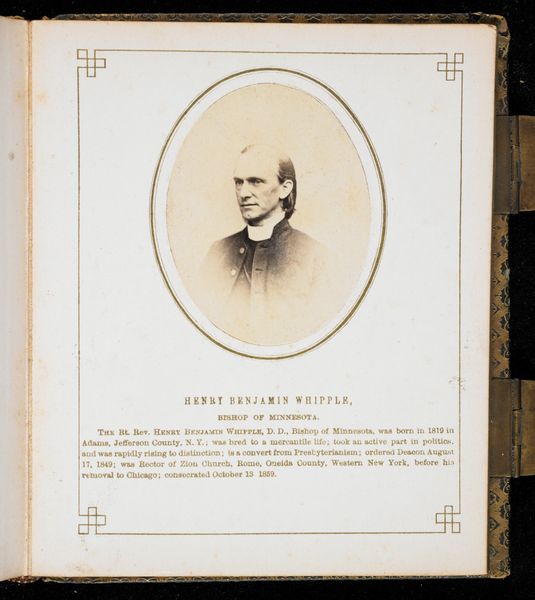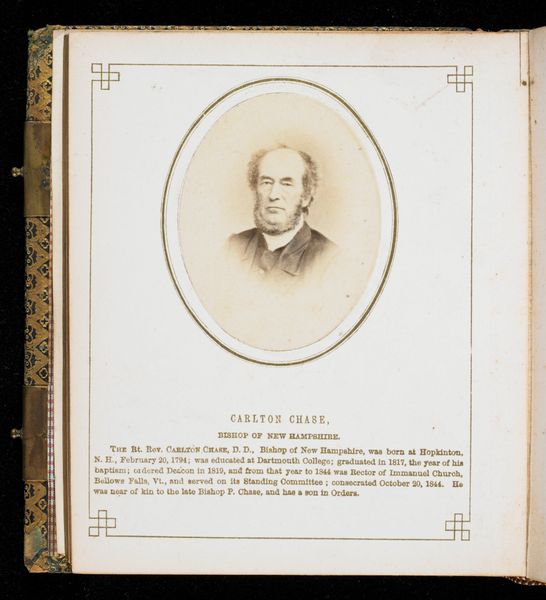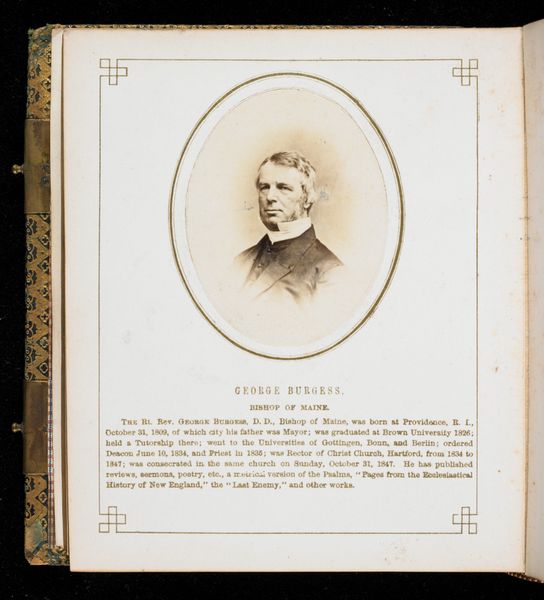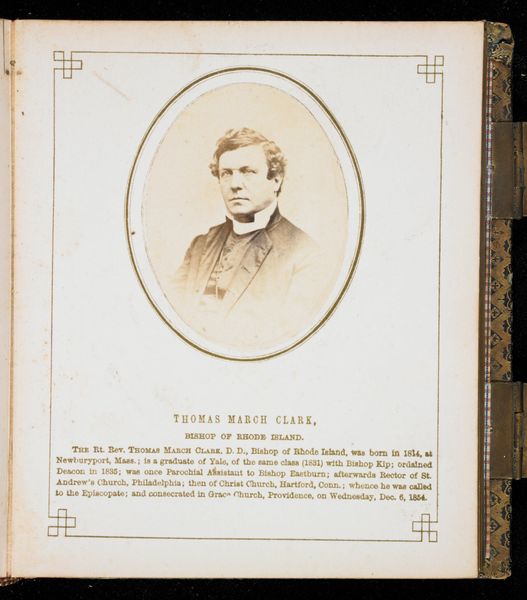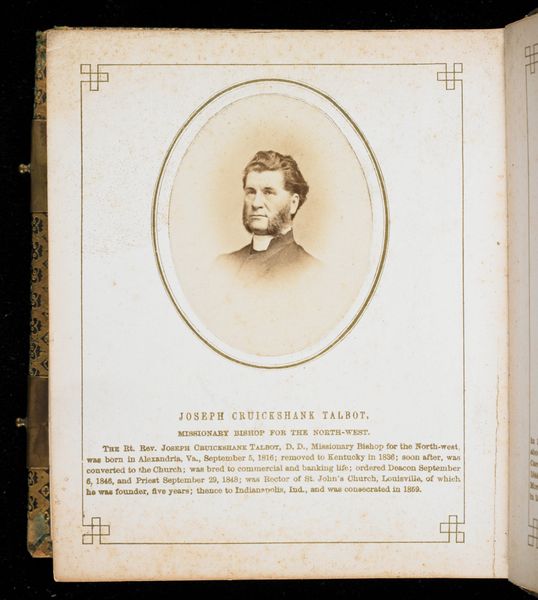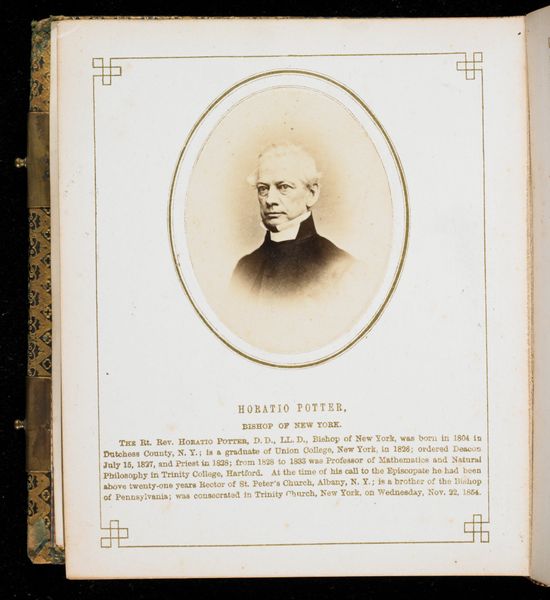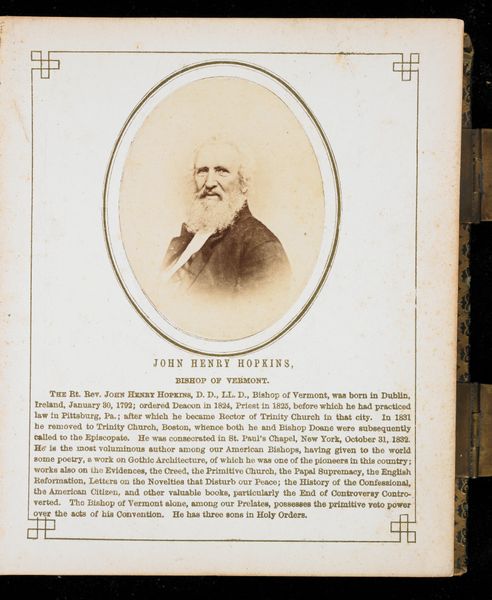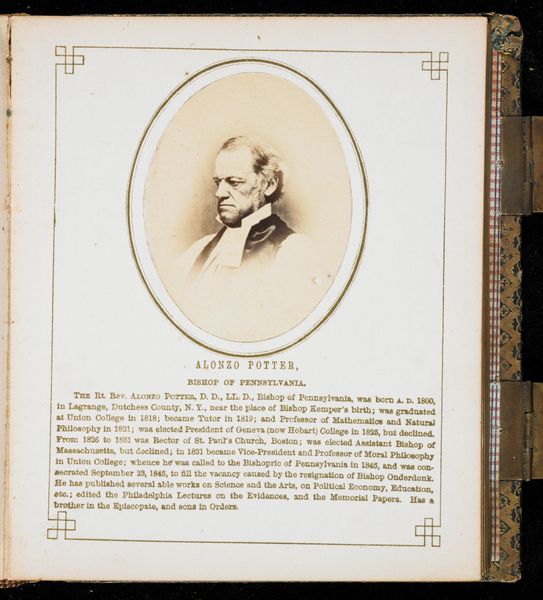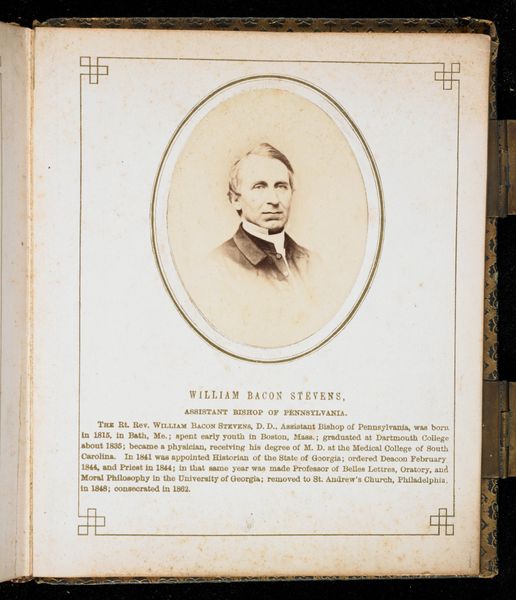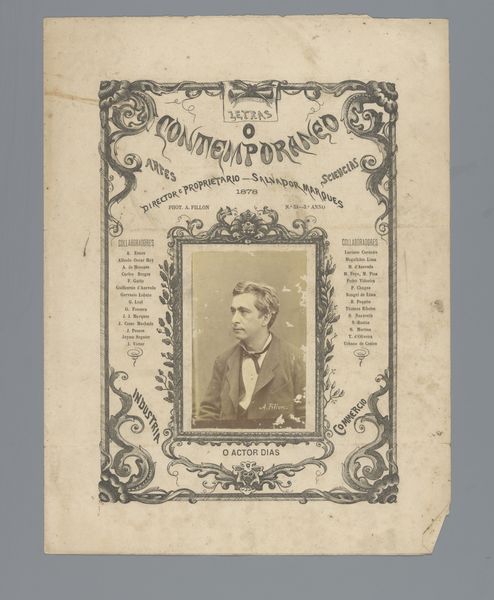
albumen-print, daguerreotype, photography, albumen-print
#
albumen-print
#
portrait
#
daguerreotype
#
photography
#
united-states
#
history-painting
#
albumen-print
Dimensions: 2 3/4 x 2 1/8 in. (6.99 x 5.4 cm) (image)5 3/4 x 4 3/4 in. (14.61 x 12.07 cm) (mount)
Copyright: Public Domain
Curator: This is a portrait of Henry John Whitehouse, Bishop of Illinois, created in 1862 by Jeremiah Gurney. It appears to be an albumen print, and is a quite compelling photographic portrait. What strikes you about it initially? Editor: It feels very formal, very posed, which I suppose is typical of portraiture from this era. But knowing that it's a portrait of a Bishop, a leader within the church, it definitely seems intentional. What do you see when you look at this piece through the lens of history? Curator: Well, this image speaks volumes about the cultural and institutional roles of photography in the mid-19th century. The very act of commissioning a portrait like this was a statement, wasn't it? It’s about solidifying status, conveying respectability, and participating in the emerging visual culture. Gurney, as a photographer, was actively shaping how influential figures like Whitehouse were perceived by the public. Consider the proliferation of these images - where were they displayed? Who saw them, and what was the effect on those viewers? Editor: So it's not just a picture, but a carefully constructed message? Curator: Precisely! It's about controlling the narrative. The photograph, by its nature, carries an air of truthfulness, lending an inherent credibility to the subject. That being said, even though photographs like this can serve as tools to shape opinions or perspectives on those portrayed, they also provide a means to democratize image dissemination, helping in broadening public visibility of persons of consequence. What might you infer about that shift toward democratization through photographic imagery, from this very example? Editor: That's interesting... Perhaps that even with carefully orchestrated poses, these images helped important leaders feel closer and accessible to those they served? Curator: Exactly. And perhaps this increased accessibility helped in promoting wider engagement and interest in religious and public matters? It really demonstrates the intertwined relationship between power, representation, and public perception in the 19th century. Editor: I hadn't considered the public role of such a personal portrait before. I definitely have a different appreciation for it now.
Comments
No comments
Be the first to comment and join the conversation on the ultimate creative platform.
